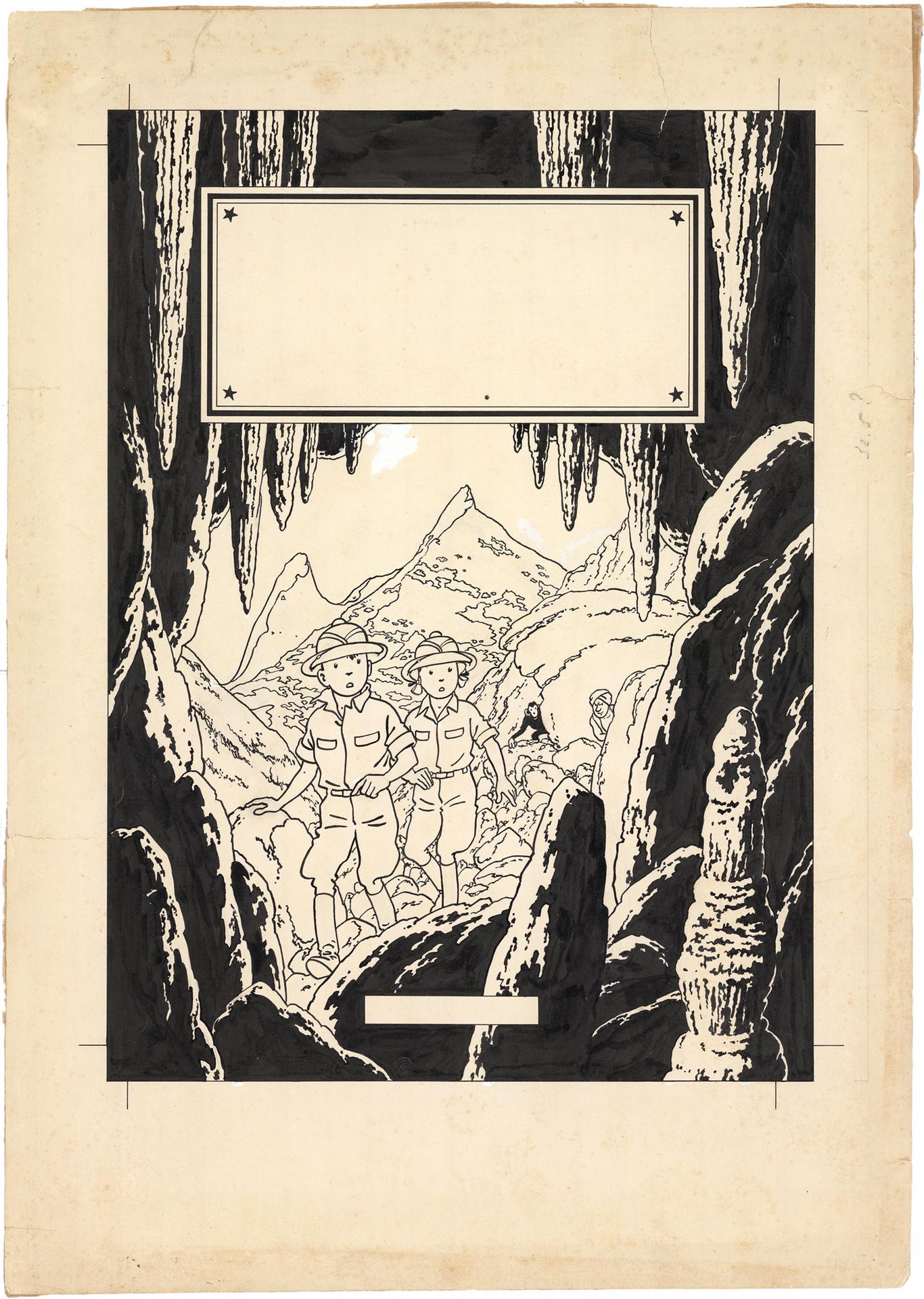Description
HERGÉ (1907-1983)
The adventures of Jo, Zette and Jocko - The valley of the cobras India ink on paper for the cover of the album. 41,2 x 30 cm. Casterman, 1957. The certificate of the Hergé Foundation is attached. The first part of La Vallée des Cobras, the third of the adventures of Jo and Zette Legrand (and their chimpanzee Jocko) created by Hergé, was published in the French weekly Coeurs Vaillants in 1939. About twenty plates had indeed been published there under the title Jo and Zette in the Maharajah's country, before the war suddenly interrupted this story. Thereafter, the author, absorbed for years by the realization of his new Tintin and by the coloring of the old ones, had not found the time to resume this unfinished story. If he felt ready to come back to it in 1954, it is because the situation had changed a lot. The Second World War had been over for almost ten years and the artist, who still reserved the creative part and a good part of the realization of his stories, was now surrounded by a handful of collaborators, among whom the cartoonist Bob De Moor distinguishes himself by the quality of his decorations. This is what allowed his boss to lead two new stories at the same time: the one he entitled L'Affaire Tournesol and - here we are - a new version of Jo and Zette in the country of the Maharajah, renamed La Vallée des Cobras. The newspaper Tintin published the 52 plates of this adventure between December 1953 and December 1954, but it was not until 1957 that the album was added to the collection published by Casterman. On the graphic level, it is interesting to note that the elaboration of the cover illustration of The Valley of the Cobras is contemporary of that of The Sunflower Affair, a story published a few months earlier. The inspiration behind the composition of the two covers is the same: Hergé inscribes the intensely dramatic scene he has chosen in an invisible circle. For Tintin, it is seen through a hole in a broken window; for Jo and Zette, through the entrance to a cave covered with stalactites and stalagmites. Here, Tintin and Haddock, encumbered by a fainting Sunflower, try to hide from their pursuers; there, Jo and Zette, watched behind their backs by a threatening Indian, are about to discover the site where the enemies of the Maharajah of Gopal have set up a hydraulic device in order to prevent the engineer Jacques Legrand, the children's father, from completing the construction of the suspension bridge that has been commissioned. In the background, the brave Jocko stands ready to come to the aid of his young masters, whose wary faces express concern. Menacing by the jaw-like shapes that compose it as much as by the darkness that can only reign there, the cavity towards which Jo and his sister are heading obviously contributes to inspire in the reader a dull anxiety. This is obviously the goal that Hergé set for himself. The role of what he calls "a good cover" is to incite those who discover it to enter... the album.
You may also like
